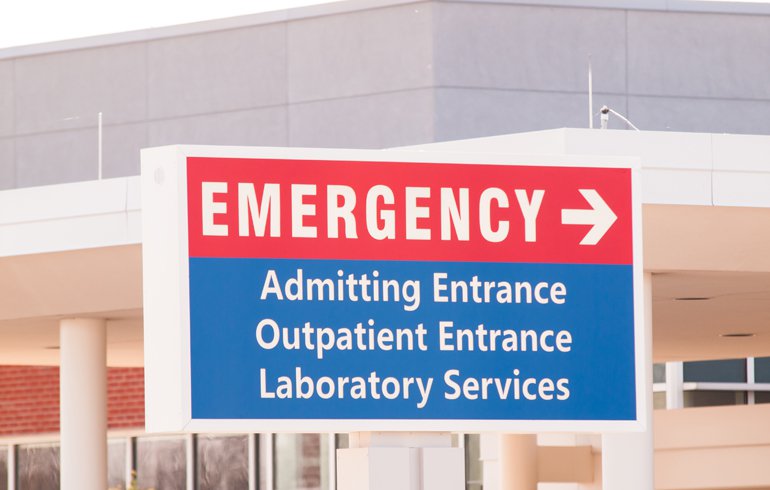One health system’s experience relevant to proposed price transparency rule

CMS recently proposed a rule requiring hospitals to disclose the amount that patients would pay for services before they receive care. The rule is part of the Trump administration’s ongoing effort to lower health care costs and increase transparency.
Announced July 29, the rule would require hospitals to “make public their standard charges for all items and services provided by the hospital, make public standard charges on the internet in a machine-readable file that includes additional information such as common billing or accounting codes used by the hospital, and make public payer specific charges for common shoppable services (ie, X-rays) that is patient-friendly.”
Hospitals that fail to comply with the proposed rule could face penalties of $300 per day if it is adopted, according to a CMS press release. Comments will be accepted until Sept. 27.
Data indicate the toll medical costs are taking on Americans.
A PLoS One study found that 9% of American households had medical debt in 2013, with the bill totaling nearly $3,000 in some instances. A report in The American Journal of Medicine found the share of bankruptcies linked to medical problems rose by 49.6% from 2001 to 2007.
Although data suggest the need for lower prices on medical services, there is limited evidence to suggest transparency is the answer.
Authors of a perspective in The New England Journal of Medicine wrote that there were no decreases in price variation 1 year after New Hampshire released price information for 30 medical services, most of which were imaging or outpatient surgery procedures. Another study in JAMA Internal Medicine that examined the effect of displaying Medicare allowable fees for inpatient laboratory tests on the clinician ordering behavior concluded that were no significant changes in associated fees per patient-day.
Conversely, the authors of a Health Affairs report, after discovering that prices from several U.S. cities of more than 200 medical services fluctuated greatly, suggested “a lack of transparency” as one of the possible reasons for their findings.
While clinicians await the specifics of the forthcoming rule, Healio Primary Care interviewed members of the medical community who are already disclosing prices to get a behind-the-scenes look at what the future may hold.
One health system’s story
University of Utah Health provides medical services to a geographic area encompassing about 10% of the lower 48 United States The system employs more than 6,000 health care professionals encompassing some 200 specialties, according to its website.

Although its employees had adopted initiatives — developing online portals allowing patients and doctors to communicate between appointments, adding valet parking to hospitals, improving inpatient food options — before those ideas became mainstream, the move towards transparency started as a challenge from the organization’s CEO, according to Yoshimi Anzai, MD, MPH, the health system’s associate chief medical quality officer.
“Our health system’s leaders encouraged all employees to think about the next great thing in patient-centered care,” Anzai told Healio Primary Care.
“Health care is the only business transaction where the consumer has to make purchase decisions without knowing how much they are going to pay upfront. Dentists provide an estimate, the mortgage company provides an estimate, why not medicine?” Anzai said.

"Patients do care about how much they have to pay, but they are not interested in how much their insurance company pays to hospital or doctors. The discussions that followed led to the disclosure of patients out-of-pocket expense that we use today,” she added.
The idea was not universally accepted at its onset, according to Anzai. She noted that a small faction within the health system was reluctant to provide price information. However, a culture of transparency and patient-centeredness helped embrace the implementation of the price transparency tool.
“Our revenue cycle team created the interactive tool to provide an estimate of patients’ out of pocket expense based on the type of insurance (Medicare, Medicaid, private payers, or self-pay), the amount of unmet deductible, and availability of co-insurance. We use the historical average of private payers’ as a surrogate,” Anzai added.
Kathy Delis, an administrative director at University of Utah Health, explained some of the processes that followed.
“Getting to the right level of data and information required close collaboration with several areas within our health system — professional billing, information technology systems and data warehouse teams, as well as several clinical departments. We also partnered with our internal marketing team on the website design and patient advisory group to get their perspective and feedback,” she said.
Anzai added that any transparency tool must also consider patients’ various levels of health literacy.
“Make sure the tool is patient-friendly and avoids the use of CPT or ICD codes. Provide information that is written at or below a sixth-grade reading level and utilizing visual aids such as graphs or pictures that is also concise and free of medical jargon,” Anzai said. “If the program you develop is too complicated, the patient won’t understand, and you’ve wasted their time and your resources.”
Delis described the finished product in her interview with Healio Primary Care.
“Patients enter their insurance category — self-pay, commercial, government — benefit information and select a service. The website then does a 6-month lookback of historic cases meeting similar insurance information, resulting in a total allowed out-of-pocket amount.”
She noted benefits the website tool provided the University of Utah Health system.
“Our website tool put us in a great position for meeting the pricing transparency requirements along with our online patient portal and financial advocate team to help patient navigate the complexity of determining their out-of-pocket expense,” Delis said.
Both women described how the website has benefitted patients.
“The feedback we get from the patients, and even some health systems, is positive. We often hear how easy the website is to navigate,” they both said.
The University of Utah Health system patients are not the only ones who seem to have warmed to the idea of medical systems providing prices up front. Researchers wrote in American Surgeon that five of the six ambulatory surgical centers that responded to their survey reported an increase in patient satisfaction and patient engagement after implementing price transparency.
“The University of Utah Health system is helping our patients stay on budget and avoid situations where they have to choose between health care and food,” Anzai added. “Many health systems send them a bill for every single item used and service provided during patient visits. We added an additional framework to avoid a tsunami of bills coming in and put everything in one single bill,” she continued.

Anzai acknowledged that though price disclosure may have sent some patients elsewhere to get medical care, what they have received from the patients that have remained offsets that consequence.
“We may not be the lowest priced health system out there, but at least we are earning our patients’ trust, which is the backbone of all medical care,” she said in the interview. “Our nation’s health care system needs to be more patient-centric. Hospital price transparency is one way we can change it.”
“In addition, younger generations who are used to online price shopping are going to be the next big wave of health care users. They will likely demand this same transparency in their medical services,” she said.
Critics respond
A medical ethicist told Healio Primary Care that the experiences noted by University of Utah Health system are not enough to assuage his concerns that hospital price transparency will make an impact.

“Listing prices for government payers is a small step toward empowering consumers but not much of one. Prices in those programs are set by legislators not patients. Patients can do nothing about them be they high or low,” Arthur Caplan, PhD, of the New York University School of Medicine, said in an interview.
“The other payers don’t care what the government reimburses in terms of what they pay or charge as copays. So, having this kind of price information is more or less an illusion — it does nothing to bring prices or costs down,” he continued.
Another expert said though transparency is a “good thing,” it will not be universally implemented in medicine for several reasons.
“Pricing information is useful if we are in a position to price shop. We may not have the time or the clinical knowledge to know what we are buying. Also, if there is only one provider available in our geography for what ails us, what difference does it make if we know the price or not,” Memo Diriker, DBA, MBA, director at the Franklin P. Perdue School of Business at Salisbury University in Maryland told Healio Primary Care.

“Finally, price alone does not convey the critical information necessary for such decisions. The value is just as much in the quality in the service provided as in the price. How many similar procedures has this provider done? What were the outcomes? Any major negative outcomes? Lawsuits? Disciplinary procedures?”
Stay tuned to Healio and check our Health Care and Politics Resource Center for continuing coverage of regulatory and legislative issues that impact clinicians. – by Janel Miller
Editor’s note: This article was updated to show that the CMS rule had been proposed in July. The editors regret the error.
References:
Hummelstein DU, et al. Am J Med. 2009;doi:10.1016/j.amjmed.2009.04.012.
Mehta A, et al. Am Surg. 2018 Apr 1; 84(4):604-608.
Newman D, et al. Health Aff (Millwood). 2016;doi:10.1377/hlthaff.2015.1379.
Richard P, et al. PLoS One. 2018;doi:10.1371/journal.pone.0199598.
Sedrak MS, et al. JAMA Intern Med. 2017;doi:10.1001/jamainternmed.2017.1144.
Sinaiko AD, Rosenthal MB. N Engl J Med. 2011;doi:10.1056/NEJMp1100041.
Disclosures: Neither Anzia nor Delis report any relevant financial disclosures.

